By Valerie Fields Hill
News Editor
Grambling studies adding women’s gymnastics team
News Editor

credit: Carlton Hamlin, GSU
Grambling State University, the powerhouse historically Black college that once created the nation’s preeminent pipeline for African American male athletes from college to the NFL, has set its sights on a new goal: sending Black female gymnasts to elite competition, including the Olympics.
Grambling athletic officials said Black women are woefully under-represented at all levels of gymnastics competition – high school, collegiate and Olympics levels.
They aim to change that narrative. Administrators at the 120-year-old public HBCU in rural North Louisiana said they will begin a feasibility study in September to create the nation’s first women’s gymnastics team at a historically Black college or university.
“We’re going to study it aggressively,” said Dr. Trayveon Scott, Grambling’s incoming vice president for intercollegiate athletics. “We’re 100 percent committed to studying the possibility of it.”
Dr. Scott made the statements this weekend as more than 200 Black girls and their parents, dozens of coaches and other clinicians flew into
Louisiana or drove up to 12 hours to attend the fifth annual Brown Girls Do Gymnastics conference being held at the Fredrick C. Hobdy Assembly Center on Grambling’s campus.
The sight of so many girls as young as four years old, vaulting in leotards emblazoned with images of young Black girls rocking puff-ball natural hairstyles on the front and other leos with a “G” for Grambling on the back, has accelerated interest in developing a women’s gymnastics team sooner than later, university officials said.
“This is tremendous,” said Tisha Arnold, director of university communications at Grambling. “These girls are already on the next level. Any of them could be on the next US Olympics team in the next four years.”
Grambling administrators said their feasibility study could take up to nine months to complete. It will include research of gymnastics equipment costs, facility needs, coaching requirements, travel expenses and a determination of which athletic conference the proposed women’s team would compete.
One NCAA women’s gymnastics coach welcomed the university’s plans.
“You only get (one) opportunity to be the first. Grambling is primed for that,” said Umme Salim-Beasley, women’s gymnastics coach at Rutgers University. “The interest is there. We’re really pushing this.”
Salim-Beasley is chair of diversity, equity and inclusion for the Women’s Collegiate Gymnastics Association, a group representing the nation’s NCAA college gymnastics coaches.

Efforts to start new college gymnastics programs would grow the sport beyond those currently participating, Salim-Beasley said.
In the past, African American women who have wanted to compete in the sport at HB- CUs have had nowhere to go; so they drop out of the sport altogether, she said.
That includes Salim-Beasley herself, who years ago while visiting Howard University in Washington D.C. as a high school student, asked whether the HBCU had a women’s gymnastics team. She was scoffed at, she said, and reminded that she was touring an HBCU campus. No HBCUs sponsored gymnastics teams, she was told.
“They just laughed at me. They said ‘Well, you do know we’re a Black school. You do know that’s a white sport’,” Salim-Beasley recalled. “That was disheartening to me.”
She went on to compete at predominantly white West Virginia University from 1994 to 1998, and later to coach women’s gymnastics at Temple University before taking the head women’s coach’s position at Rutgers in May 2018.
However, she never forgot her experience years ago during that campus tour at Howard, where both her father had earned his master’s degree and grandfather had completed his dental studies.
“Really, from that time period on, I’ve just been trying to let people know that gymnastics is for brown girls,” she said.
“Everyone should be able to have choices and opportunities,” said the coach, who flew from New Jersey to Shreveport and drove another hour to get to the conference at Grambling.
“This is giving those gymnasts of color a choice (of teams on which to compete) where before they had no choice.”
Grambling currently has eight women’s athletic teams – basketball, bowling, tennis, soccer, softball, volleyball, cross country and track and field. The women’s gymnastics team would be its ninth. The teams compete on NCAA Division I in the Southwestern Athletic Conference, or the SWAC.
No SWAC colleges, nor any of the nation’s other 106 public or private historically Black universities, offer gymnastics – women’s or men’s.
By contrast, there are 80 women’s collegiate gymnastics teams, all at predominantly white universities and at the US Air Force Academy, according to USA Gymnastics, one of the leading governing bodies of the sport.

“LSU, Georgia, Ole Miss, Stanford, TCU, those are a few who offer the sport,” Dr. Scott said. “If we approach this at Gram-bling, it would show black and brown girls that their opportunities in gymnastics are limitless.”
Dr. Scott’s statements come amidst na- tional conversation calling for racial equity and representation in all areas of women’s gymnastics – including in coaching, judging, gym ownership and competition.
For months leading up to the US Olympics trials, gymnastics judges faced criticism and charges of racism after they deducted points from African American gymnast Simone Biles’ scores when she performed vaults deemed too dangerous for the sport. Judges have said their decisions were made to discourage other athletes from attempting the moves.
Biles competes at the Tokyo Olympic Games, which open Sunday.
At Grambling last weekend, conversations regarding inequity – and insensitivity over hair styles and body image in the sport – were part of a panel discussion during the Brown Girls Do Gymnastics conference.
Among Saturday’s panelists was the mother of former University of Alabama gymnast Tia Kiaku, who quit the women’s gymnastics team in 2020 after she said the university allowed a culture of racism to fester on the team. Kiaku accused an assistant coach of making a racist comment toward her and two fellow African American gymnasts.
“They all were telling their stories,” said D’Carra Harrison, who drove more than four hours to bring her 8-year-old daughter Jaycee, the only African American girl competing at Level 4 on her team in Cypress, Texas, near Houston, to the conference.
“Tia’s mom was there,” Harrison said. “Actually her story was horrible,”
Harrison, who attended Grambling herself as an undergraduate, said she had no idea before this weekend’s conference that the sport Jaycee loves is so fraught with pitfalls that could potentially damage her daughter’s mental health.
“Each person who came and spoke gave us their contact information,” for support if needed, she said. “That part, I appreciated.”
There also was talk of Olympic dreams. This weekend, coincidentally, is opening weekend for the Tokyo Games.
Derrin Moore, who founded Brown Girls Do Gymnastics to promote the inclusion of Black and Latina women in competitive gymnastics, didn’t plan this weekend’s conference around the opening weekend of the Olympics.
She sometimes is uncomfortable when there’s too much conversation about the elite levels of the sport and not enough about the collegiate and levels below it.
While she celebrates Biles’, Jordan Chiles’ and Sunisa Lee’s inclusion as a historic 50 percent of the US women’s Olympic gymnastics team, still she worries that those viewing the Olympics may falsely assume that all levels of the sport are equally as accessible and inclusive: They are not.

“The Olympic team is just not a good representation” of the entirety of gymnastics, said Moore, who lives in Atlanta and has coached competitive gymnastics for 25 years. “There’s a difference between the collegiate route and Olympic or elite.” Moore says Black women athletes who compete at elite levels such as the Olympics represent a miniature image of the sport – not a full view.
Such gymnasts often hail from families who have the economic means to compete in the wildly expensive sport of gymnastics.
“Black people have money now,” Moore said. “That’s why you see the Simone Biles and the Jordan Chiles, because their parents have the resources.
“There’s so many extreme situations that have to happen to be at that level. It’s just not a true representation of gymnastics. It’s just a small representation,” Moore said.
Her assertions are accurate, according to a new study expected to be released next week by The Doug Williams Center for the Study of Race & Politics in Sports.
The Center, which is housed on Grambling’s campus, is a new institute dedicated to researching, among other issues, the influence, history and impact of African American athletes in US society and politics.
Raven Thissel, a spokeswoman for the Center’s new study, said research shows that Black women do not participate in US gymnastics at the same levels as white women, among other reasons, because they simply can’t afford to do so.
“Cost comes down to one of the barriers for people of color,” Thissel said. “That is because of the dramatic gap of wealth in America.”
On average, participating at the entry level of competitive gymnastics, Level 1, costs about $500 per year for training, leotards and other expenses, Thissel said the study found. Competing at elite levels, Level 8 and above, costs an average of $20,000 annually, she said.
For context, the average Latin American household earns $41,000 per year while the average African American household wages are far less, said Thissel, who is the marketing and public relations director at The Doug Williams Center.
There’s little money left, she said. “That type of money is just not there for expending on extracurriculars.”
Grambling State’s administrators and athletics officials contend they can bridge the gap – and vault Black and Latina women into US gymnastics arenas.
Doing so would not be Grambling’s first exercise in catapulting athletes to elite levels.
In the 1960s, Grambling State sent a continuous roster of Black men to play in the NFL and in Major League Baseball.
Grambling’s Willie Brown was signed by the then AFL Houston Oilers after leaving the college in 1963. He and Buck Buchanan, Charlie Joiner, Ernie Ladd and others were part of Grambling’s famed college-to-professional sports pipeline.
The pipeline continued throughout the 1970s, although the feed slowed with desegregation and the admission of Black athletes to predominantly white universities.
In the 1980s, under the guidance of the legendary Coach Eddie Robinson, the winningest coach in college football history, Grambling continued to send athletes to the NFL, including the first Black quarterback to play in a Super Bowl, Doug Williams. The Doug Williams Center for the Study of Race & Politics is named for the university’s former star quarterback.
It’s this history that leads Grambling administrators to believe they know the road- map for athletic success – even in a sport in which the college has never competed.
“When you think about the athletic legacy of Grambling State, the home of Eddie Rob- inson, Everson Walls and Doug Williams, the legacy is there,” added Arnold. “This is the premier place to do it.”
If this weekend’s conference offers any window into the future of gymnastics, Arnold may be correct.
Niki Martin traveled 12 hours by car from Louisville, Ky. to bring her four-year-old daughter Kamryn to the Grambling campus where her father had been an administrator before leaving just weeks ago.
After 2020’s race riots in her home city and elsewhere across the nation, Martin hopes Kamryn’s future includes a choice of competing on an HBCU team in a supportive and nurturing social environment.
“She already made a comment ‘Mom, a lot of these girls look like me’,” Martin said of the toddler. “For her to recognize that is a big deal.”
Martin said Grambling’s plans are within “perfect timing with everything that is going on in this country.”
“In 2020, we saw a lot of things happen between George Floyd and Breonna Taylor,” said Martin, a former competitive gymnast herself. “I think it’s the perfect time to do this.”

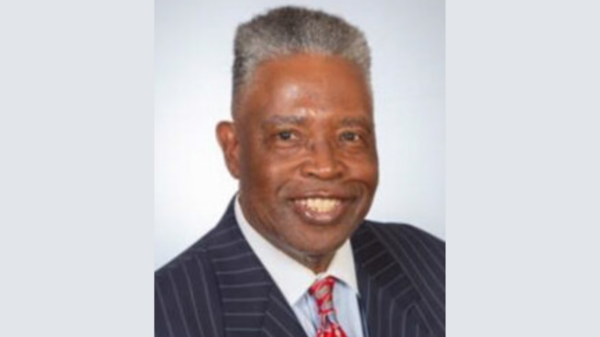

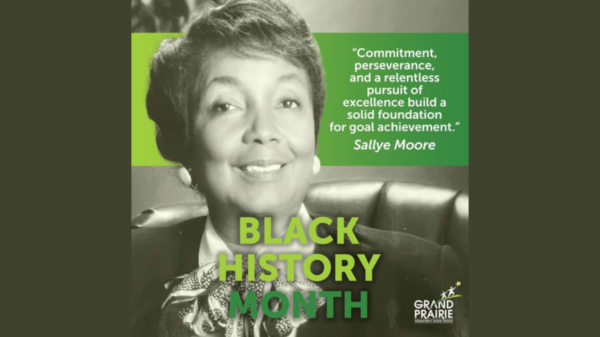

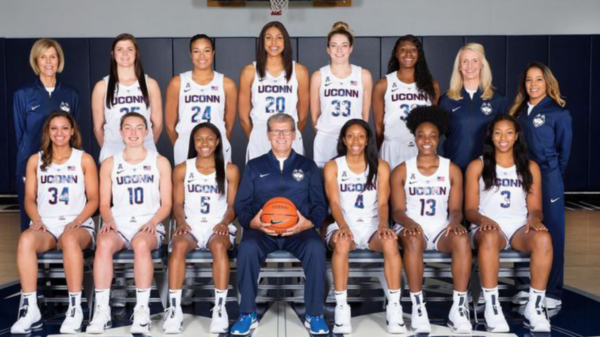
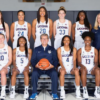
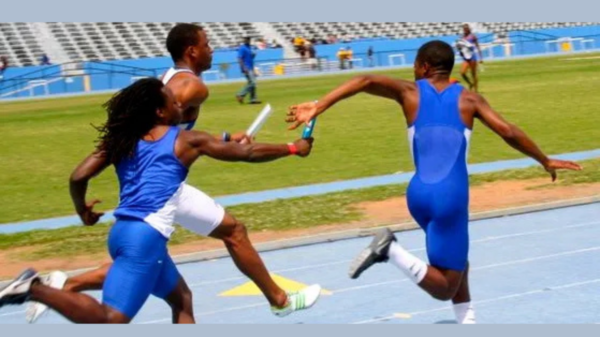

You must be logged in to post a comment Login